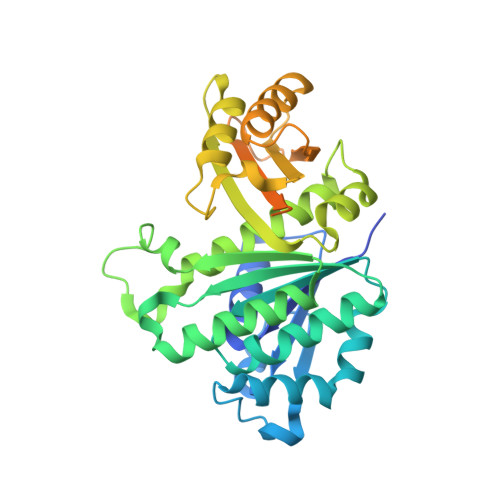Structural change in FtsZ Induced by intermolecular interactions between bound GTP and the T7 loop
Matsui, T., Han, X., Yu, J., Yao, M., Tanaka, I.(2014) J Biol Chem 289: 3501-3509
- PubMed: 24347164
- DOI: https://doi.org/10.1074/jbc.M113.514901
- Primary Citation of Related Structures:
3WGJ, 3WGK, 3WGL, 3WGM, 3WGN - PubMed Abstract:
FtsZ is a prokaryotic homolog of tubulin and is a key molecule in bacterial cell division. FtsZ with bound GTP polymerizes into tubulin-like protofilaments. Upon polymerization, the T7 loop of one subunit is inserted into the nucleotide-binding pocket of the second subunit, which results in GTP hydrolysis. Thus, the T7 loop is important for both polymerization and hydrolysis in the tubulin/FtsZ family. Although x-ray crystallography revealed both straight and curved conformations of tubulin, only a curved structure was known for FtsZ. Recently, however, FtsZ from Staphylococcus aureus has been shown to have a very different conformation from the canonical FtsZ structure. The present study was performed to investigate the structure of FtsZ from Staphylococcus aureus by mutagenesis experiments; the effects of amino acid changes in the T7 loop on the structure as well as on GTPase activity were studied. These analyses indicated that FtsZ changes its conformation suitable for polymerization and GTP hydrolysis by movement between N- and C-subdomains via intermolecular interactions between bound nucleotide and residues in the T7 loop.
Organizational Affiliation:
From the Faculty of Advanced Life Science, Hokkaido University, Sapporo 060-0810, Japan and.















